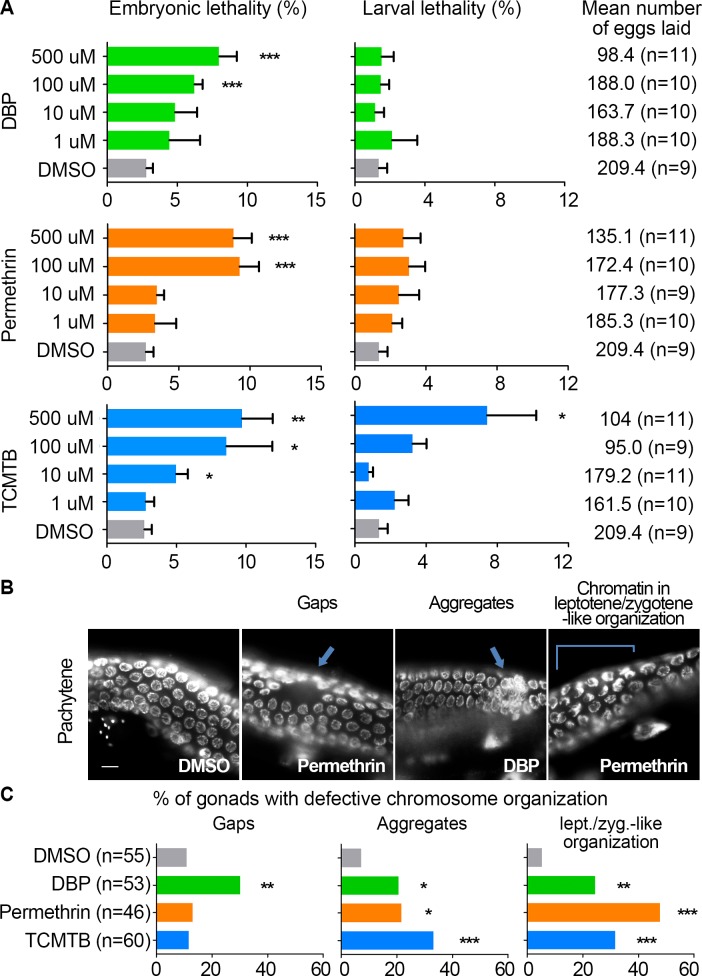Fig 2. DBP, Permethrin, and TCMTB exposures result in increased embryonic lethality, sterility and defects in chromosomal organization in the germline.
(A) Plate phenotypes for indicated chemical exposures. Embryonic lethality, larval lethality and the number of eggs laid (brood size) are shown for the indicated doses of exposures and compared to vehicle alone (0.1% DMSO). Error bars represent SEM. *P<0.05, **P<0.01, and ***P<0.001 by the two-tailed Mann-Whitney test, 95% C.I. (B) Images show pachytene nuclei in the germlines of whole, undissected worms fixed with Carnoy’s fixative and stained with DAPI that were exposed to vehicle control, 100 μM DBP, 100 μM permethrin, and 10 μM TCMTB. Chemical exposures lead to increased numbers of gonads with gaps (discontinuities or spaces lacking germ cell nuclei; arrow in second panel), aggregated nuclei (arrow, third panel) and DAPI-bright nuclei with chromosomes collapsed to one side (area indicated with a bracket, fourth panel) instead of dispersed throughout the nuclear periphery and organized in clear parallel tracks as seen in control at that stage. Scale bar, 5 μm. (C) Percentage of gonads exhibiting gaps, aggregates, or nuclei with chromatin in a leptotene/zygotene-like organization, in pachytene (n = number of gonads examined). * P<0.05, **P<0.01, and **P<0.001 by the two-sided Fisher’s exact test.

